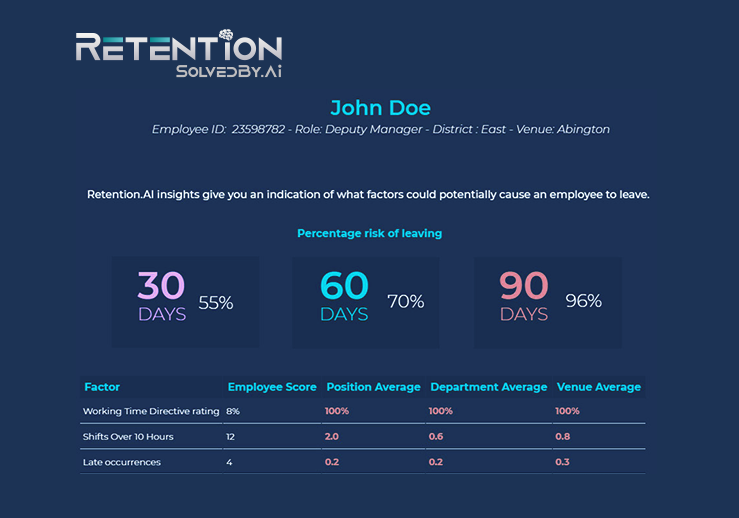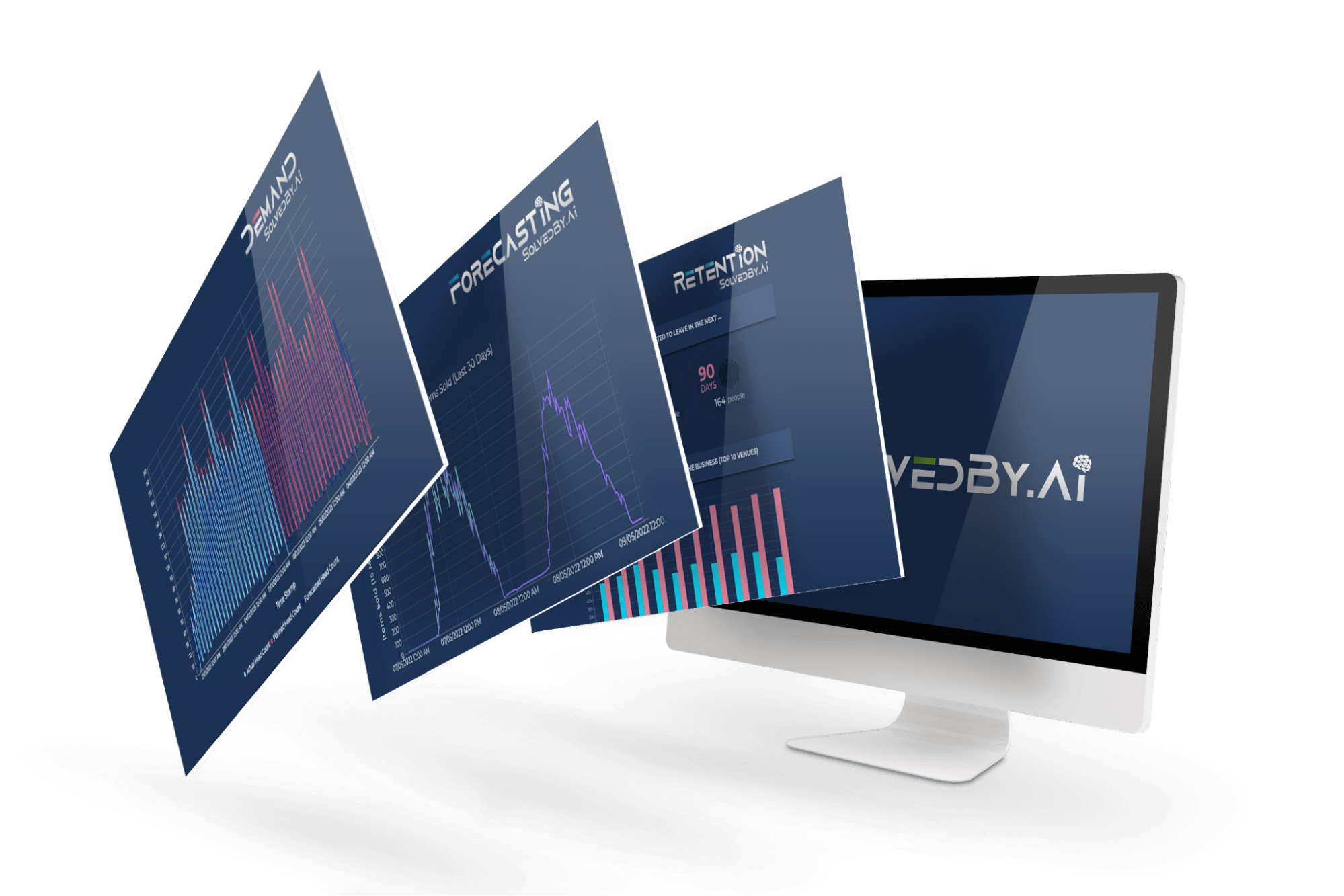What is the definition of employee retention?
Employee retention is the ability of an employer to retain staff. Employee retention can be measured using a single KPI, operational turnover. Employee retention also refers to strategies used to improve operational turnover metrics.
In this article, we try to answer your questions so that you can have a great understanding of what is employee retention and in particular, how AI can help you improve your operational turnover.
Why is employee retention important?
An employee retention strategy aims to reduce operational turnover. This has many benefits, including increased employee and customer satisfaction, leading to increased productivity and profitability.

What are the benefits of improved employee retention?
- Better employee satisfaction: Ultimately, improved employee retention will only occur if the average employee is more satisfied with their role. The steps involved in reducing operational turnover will increase employee satisfaction:
- Increased customer satisfaction: there is a direct correlation between employee satisfaction and customer satisfaction.
- Increased revenue: there is a direct correlation between customer satisfaction and increased revenue.
- Reduced operational costs: talent attraction, recruitment, and training costs are expensive and run to thousands of pounds per employee.
- Improved operational efficiency: The loss of experienced staff and the replacement of new employees leads to diluting your operational strength, which often leads to reduced customer satisfaction.
- Free up management time: The time spent recruiting, training and managing shortages can be better used in more productive ways.
How do I measure employee retention?
To fully understand what is employee retention we need to understand how to measure it and what factors are important. There are two regularly used statistics to measure employee retention across a whole organisation. The most regularly used one is operational turnover.
- Operational Turnover: This is calculated as a percentage. It equals the Total Number of leavers over a period divided by the total number of employees over the period multiplied by 100.
Another often-used measure is:
- Net Employee Growth: A measure of the growth in total employees. It equals the number of new joiners in a period minus the number of leavers during the period.

What are other measures available to analyse retention?
The two key measures of operational turnover and net employee growth give an excellent overview of the whole organisation. However, when analysing employee retention, it is often helpful to investigate some other measures, such as how good the company is at keeping new joiners. This will help you focus on critical areas of high operational turnover. Here are some of the additional measures that you can investigate:
- Accession rate: A measure of the number of new employees added to the payroll during a specific period
- Instability Rate: The number of new joiners who leave an organisation during a given period.
- Separation rate: A measure of employees leaving the business in a given period
- Stability rate: A measure of employees who stayed at an organisation in a given period
- Survival rate: A measure of new employees who stay in an organisation during a given period
- Wastage Rate: A measure of new employees who join and then leave the business in a given period
How can my Operational turnover be improved?
A good method is to benchmark your retention metrics against other similar organisations. This can be done with the help of trade organisations and software vendors. If you are performing below the average, then it is safe to assume you can improve your performance.
How do I improve employee retention?
We believe that the best approach is a three-step process:
- Identify the people most likely to resign
- Identify the reasons that those people are likely to leave
- Address the reasons for dissatisfaction

A systematic approach to these three steps will see continuous improvement in your HR processes, improving operational turnover and keeping it low.
What tools are available to help me improve employee retention?
The traditional methods have included surveys, one-to-one meetings and reviews. However, if these aren’t delivering benchmark retention levels, then maybe you should consider some of the new AI-powered tools.
These can accurately forecast how many people will likely leave your organisation in the next 30, 60 or 90 days. They can also deliver insights per person on why they are likely to leave.
With access to this data, managers can intervene with potential leavers, address concerns, and improve retention rates.

What benefits can an AI retention tool bring to retention?
- Improved operational turnover: By discussing issues with staff based on the insights given by an AI tool, managers can address problems before an employee leaves.
- Increased employee engagement: Focusing on why people leave will ensure you continuously improve your HR and operational processes to retain staff and will help all employees, leading to higher engagement.
- Recruiting planning: An accurate forecast of likely resignation numbers by role and by location will allow advanced notice of recruiting requirements and allow you to maintain the right number and mix of staff.
- Improved management: Benchmarking the data between departments will help identify any manager needing support and coaching, which will improve retention in the long term.










